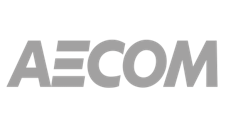If you work in the nonprofit sector, staying current with accounting standards can sometimes feel overwhelming. Luckily, the FASB’s Not-for-Profit Advisory Committee (NAC) is here to help make sure your voice is heard and that accounting rules reflect the unique challenges nonprofits face. In their March 2025 meeting, NAC discussed important topics that could shape the future of nonprofit accounting. Whether it’s about leases, cash flows, or investment income, these discussions are geared toward making nonprofit financial reporting clearer and more useful. Let’s dive into the highlights and see what might impact your organization.
FASB Agenda Consultation: Priorities for the Coming Years
FASB regularly seeks input on what accounting topics need attention, and the NAC plays a vital role in guiding these decisions for nonprofits. Following an initial consultation last fall, the FASB invited comments early this year. NAC members shared that while significant progress has been made addressing previous priorities, nonprofits face some ongoing challenges.
Top priorities for future focus include:
- Realized and unrealized gains: More detailed breakdowns of investment income components to improve transparency.
- Operating measures and KPIs: Nonprofits need tailored guidance because their financial metrics often differ from for-profit companies.
- Consolidation guidance: Current rules are tough to apply, especially with rising public-private partnerships involving complex leasing and consolidation.
- Definition of a business: Nonprofits with conduit debt seek fairer timing on implementing new standards, avoiding comparability issues with public business entities.
- Statement of cash flows: Calls for improvements, particularly around reporting investments like endowments and interest reinvestment.
- Liquidity risk disclosures: Greater clarity needed on defining funds available for general purposes to enhance consistency.
Some topics, such as low-interest loans and joint cost fundraising disclosures, were considered lower priorities at this time.
Emerging Reporting Issues for Nonprofits
The NAC also highlighted areas where nonprofits experience inconsistencies, such as differing treatments of subscription-based IT arrangements and leases between GASB and FASB, and the need to align government grant accounting for nonprofits and for-profits.
Recent Standards Implementation Feedback
Members shared that the new lease accounting standard (ASC 842) is achieving its goals by increasing transparency without overburdening organizations, although it has impacted liquidity metrics like debt-to-net-asset ratios. Regarding credit losses (ASC 326), nonprofits appreciate simplifications proposed but want public debt nonprofits included in the scope.
Other Important Project Updates
The NAC received updates on other key FASB projects, including:
- Refinements to derivatives accounting, especially relevant to healthcare entities.
- Treatment and disclosure of intangible assets, noting differences between acquired and internally developed intangibles, and the importance of patents and trademarks for funding.
- Software cost accounting improvements, with nonprofits requesting additional implementation time.
- Codification improvements affecting various nonprofit-specific accounting topics.
Conclusion
The FASB’s Not-for-Profit Advisory Committee is actively shaping accounting standards to better fit the nonprofit sector’s needs. By keeping an eye on these developments, your organization can stay ahead of changes that improve financial transparency and decision-making. For full details and meeting resources, visit www.fasb.org.




















